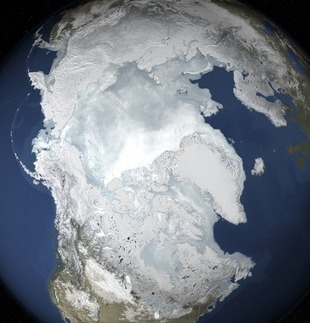Arctic sea ice reaches new record low mark for wintertime
The growth of Arctic sea ice this winter peaked at the lowest maximum level on record, thanks to extraordinarily warm temperatures, scientists have revealed. The National Snow and Ice Data Center says ice covered a maximum of 5.607 million square miles of the Arctic Ocean in 2016. That’s 5,000 square miles less than the old record set in 2015 — a difference slightly smaller than the state of Connecticut. It’s also some 431,000 miles less than the 30-year average.
We’ve lost about two Texases’-worth of sea ice during the wintertime. In the summer, it’s even more extreme. We’ve lost almost double that or more in terms of the area covered.
NASA scientist Walt Meier
It was so warm that the Barents Sea was pretty much close to ice -free for almost the whole winter, which is very unusual, NASA scientist Walt Meier said. The new report reveals just the latest disturbing data point in a disturbing trend wherein climate changes are happening even faster than had been forecast, Pennsylvania State University climate scientist Michael Mann said. These dramatic changes don’t stay in the Arctic. Typically, white-coloured ice reflects about 80 percent of the Sun’s rays back into space. With less ice cover, the ocean absorbs a lot more of these rays, which warms the water.

Arctic ice